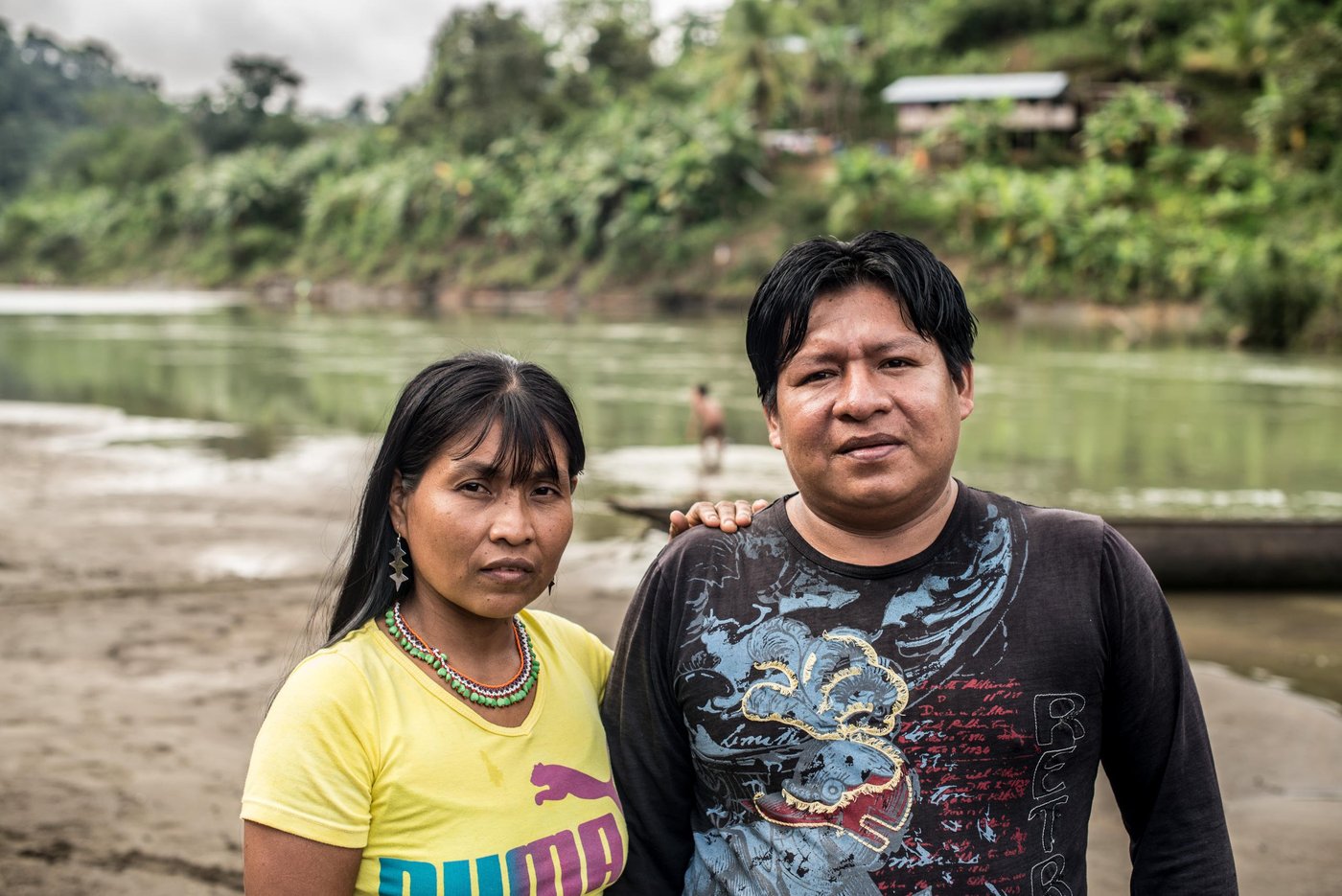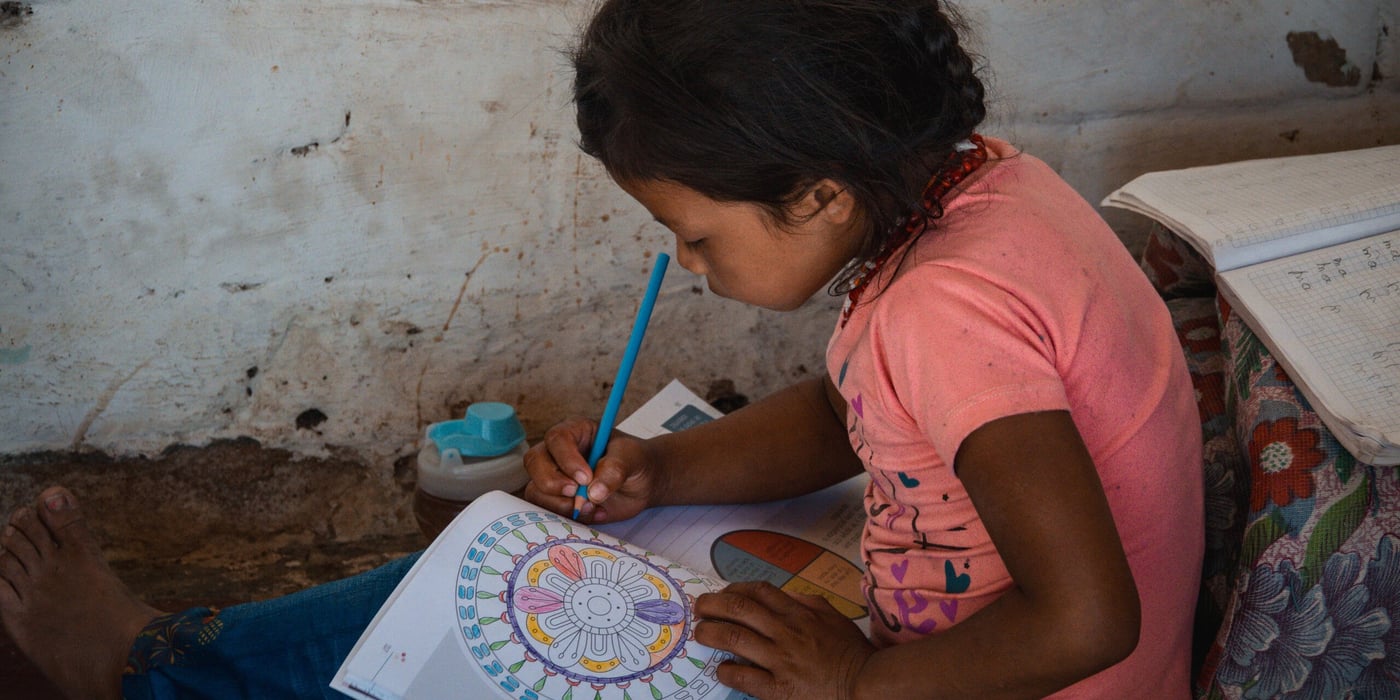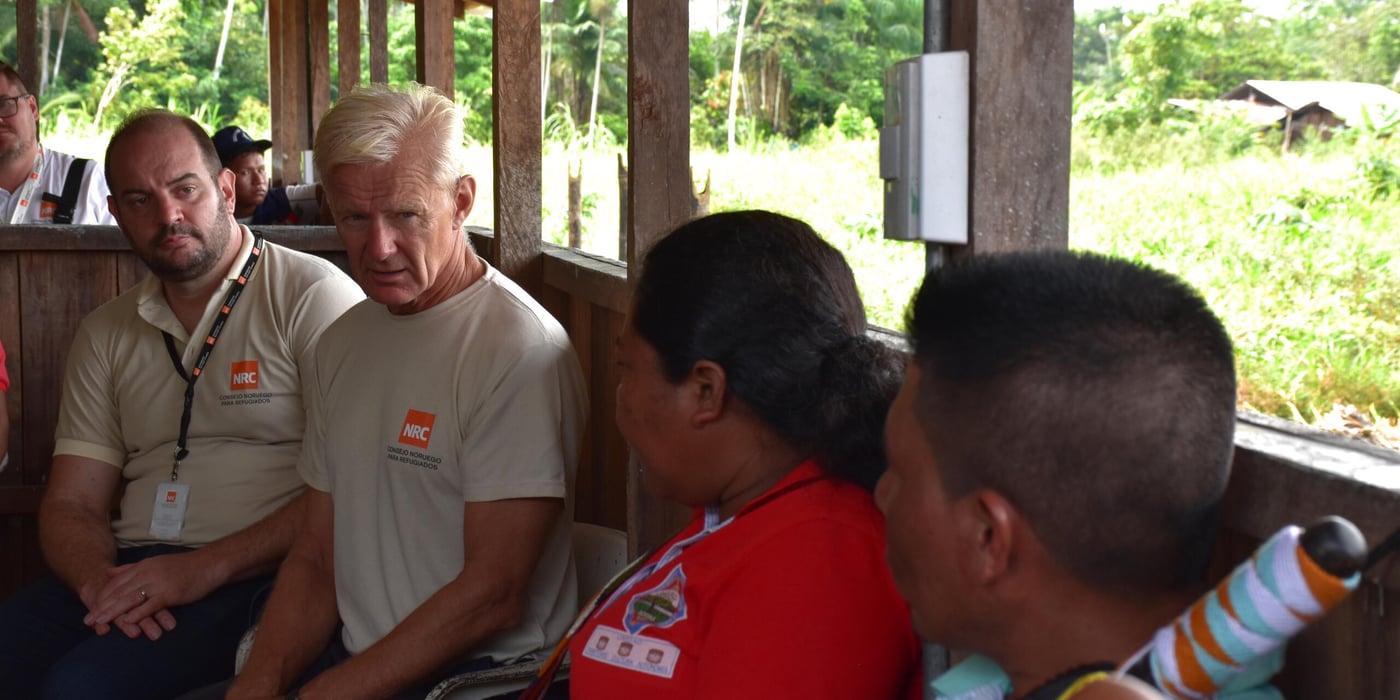
Exactly one month ago, he fled with his wife and children from their home to the village of Catrú in Colombia’s Chocó region. The thirty-three-year-old man is part of the indigenous group Embera and in October 2017, one of their community leaders was killed by an armed group.
Roja’s people have lived in this area for generations. Over the years, they have been displaced several times.

Intensified conflict
Although the country reached a milestone with the 2016 peace agreement between the Government and the FARC armed group, conflict has continued or even intensified in some areas since FARC laid down its arms. Many groups wish to control these areas because of their natural resources and drug traffic routes.
Catrú is the centre of the Embera people, who live dispersed along the river and in the mountains of the region. It is home to 2,040 people. Between 25 and 28 October this year, an additional 1,142 displaced people of the Embera community arrived to the village.

Afraid to be killed
“They came because they feared that more people would be killed,” says one of the community leaders in Catrú.
“The problem is that the peace agreement was only with FARC. But there are other armed groups here.”
The Pacific region, particularly Chocó, has become a battleground for clashes between the National Liberation Army (ELN) and another armed group. Indigenous and Afro-Colombian communities have been disproportionally affected. Seven out of ten people displaced this year come from these communities.
“The reality for many Colombians is in stark contrast to the positive picture painted by the peace deal. Insecurity is undermining the peace process,” warned Christian Visnes, the Norwegian Refugee Council’s (NRC) Country Director in Colombia in a press release this week.
Increased displacement
The number of displacement incidents increased by 36 per cent compared with the same period last year. NRC is also concerned by the high number of assassinations of community leaders in 2017. Over 78 known deaths of leaders and members of social organisations have been reported, and at least 13 other suspected murders, according to the UN refugee agency.
“This is the second time we flee. Both times we have come here, where we have friends and relatives,” Roja explains.
He does not know for how long they will have to stay.
“That is a collective decision for the community to make,” he says.
“The government must protect us and let us know what will happen to us. We want justice.”




